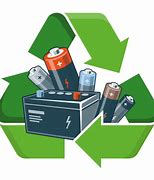 Health and safety on waste sites and when managing waste has never been so important. There are so many hidden dangers and hazards from, for example:
Health and safety on waste sites and when managing waste has never been so important. There are so many hidden dangers and hazards from, for example:
National Operational Guidance (NOG) that has been written for the UK Fire and Rescue Service (FRS) reports over 300 waste fires per year. And according to Material Focus batteries cause “three and half times more” fires in the waste stream than previously reported. They also shared that more than 700 fires in bin lorries and recycling centres were caused by batteries that had been dumped into general waste.
One of the biggest challenges when dealing with waste fire are deep seated fires which start at the centre of a rubbish pile (typically there are two types of waste fires, surface fires and deep-seated fires).
Don’t let waste build up. When dealing with waste on a waste site ensure that there is a process in place to separate, segregate and dispose of the waste. The risk of fire is greater when there is more waste for longer periods of time. The more waste there is the further a fire will spread and larger piles are more likely to self-combust if stored for longer periods of time. To reduce the risk, reduce the amount of waste being stored.
Segregation is important, ensure there are gaps, spaces between piles of waste, most guidance suggests having breaks of at least 6m.
Ensure the site is secure and has CCTV; arson can be a big problem on waste sites.
Ensure that the site has a strict no smoking policy.
The UK FRS NOG fires on waste sites guidance is a useful resource as is the Waste Industry Safety and Health Forum (WISH) document, Reducing fire risk at waste management sites.
Carry out a risk assessment that:
The BBC recently reported that single use vapes are sparking surges in fires at UK waste sites. They indicated that a whopping “1.3million disposable e-cigarettes discarded every week often end up in general waste and their broken batteries are highly flammable”. The document suggests that many waste sites are now using “artificial intelligence to detect vapes and their lithium-ion batteries, as well as installing thermal imaging cameras and automatic foam jets.”
Costs and impacts to the industry
Insurance companies are becoming nervous and many are refusing to insure waste sites, or are imposing huge annual premiums.
A study carried out in 2021 suggests that lithium-ion batteries are responsible for almost half of the UK’s waste fires with an estimated cost of around £158m to the UK economy.
When there are fires on waste sites, the environmental impact is significant which can result in fines being imposed by the Environment Agency (EA) or Health and Safety Executive (HSE).
Many consumers do not understand the problems or risks and even the hazards associated with batteries. Typically, they are not taken to local battery disposal bins (often provided at local supermarkets), and they are hidden in their usual household waste.
Scott Butler, Executive Director of Material Focus said: “People should never bin their electricals or their portable batteries. If they can, they should remove any hidden batteries from their electricals and recycle the batteries and electricals separately. If they can’t remove the batteries, they should recycle their electricals separately as always. Having listened to the numerous stories of flames engulfing waste and recycling trucks as they drive down residential streets, it’s important that we all take action now to keep our streets, householders, waste and local authority staff, and fire fighters safe. People can find their nearest recycling point for batteries and electricals by visiting our recycle your electricals website.”
Mark Andrews, National Fire Chief’s Council Waste fires lead said: ” We urge people to recycle electricals and batteries and not to dispose of them with general household waste. People are often surprised to hear that batteries can cause fires in both bin lorries and waste plants, but they do and as we use and dispose of more electronic devices these incidents are not rare. These fires can be challenging for fire services to deal with, have a significant impact on local communities and present a real risk to staff working on lorries and waste plants. Everyone can do their bit and prevent fires by ensuring they dispose of electrical items correctly.”
Lithium batteries are extremely challenging as damaged and defective batteries are significantly more dangerous as they can lead to thermal runaway. Therefore, it is important to raise awareness and improve the way that consumers dispose of these batteries. Many are calling for a change in legislation in fact The British Metal Recycling Association (BMRA) has called for new rules to prevent households throwing away unwanted electrical equipment.
Problems with lithium batteries include:
Warning signs that a lithium-ion battery or cell is likely to fail include:
Until the safe disposal of lithium batteries is more heavily regulated it is important to take care when dealing with waste lithium batteries. Always ensure that a risk assessment is carried out and that there are suitable and sufficient controls in place to minimise the consequences. If in doubt, seek advice from an expert.
Please contact us if you require further information.